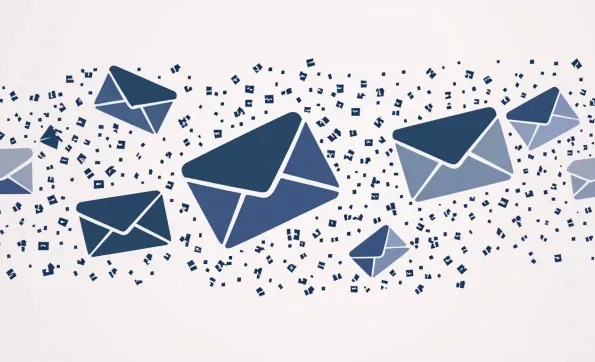The email security landscape has undergone a significant transformation in recent years, driven by technological advancements and evolving market demands. Traditional on-premises security measures are no longer adequate to safeguard against the increasingly sophisticated threats targeting cloud-based email platforms. As organizations shift to cloud services like Microsoft 365 and Gmail, the need for innovative security solutions has become more pressing. This article explores the key changes in the email security market, the role of AI and large language models, and the strategic approaches employed by Check Point to stay ahead in this dynamic field. Insights from Gil Friedrich, Check Point’s VP of Email Security, provide a deeper understanding of these developments.
Transformation in the Email Security Market
The migration from on-premises exchange services to cloud-based email platforms has fundamentally altered the email security market. Transitioning to systems like Microsoft 365 and Gmail introduced new attack vectors, necessitating contemporary security measures. API-based email security, pioneered by Avanan in 2016, has since become a mainstream approach. Currently, API-based security comprises about 15% of the email security market, and it is expected to rise to approximately 40%-50% within the next three to five years. This shift underscores the demand for more sophisticated security solutions capable of protecting against complex threats.
API-based solutions integrate seamlessly with cloud email platforms, providing real-time threat detection and response. This seamless integration ensures that organizations can stay ahead of emerging threats. The growing adoption of API-based security corroborates its effectiveness in tackling challenges unique to cloud email services. As organizations continue to migrate their operations to the cloud, the necessity for advanced email security becomes even more critical. Traditional on-premises security solutions are insufficient, prompting a shift toward more adaptable and responsive measures like API-based security, thus bolstering the overall security posture of these organizations.
Role of AI and Large Language Models
Artificial Intelligence (AI) and Large Language Models (LLMs) have become integral components of modern email security solutions. Avanan, a pioneer in this field, deployed models like BERT in 2019 to detect phishing scams. Initially seen as science fiction, these advanced technologies are now recognized for their ability to perform complex tasks with high accuracy. Generative AI, in particular, plays a crucial role in email threat detection, enabling advanced functionalities such as discerning the nature of emails based on human language directives. This capability allows for more precise identification of phishing attempts and other malicious activities, thereby enhancing overall email security.
The integration of AI and LLMs in email security is expected to expand even further. These technologies are continually evolving, becoming more sophisticated and capable of handling increasingly complex threats. As AI progresses, its role in protecting organizations from email-based attacks will become even more significant. The ability of AI to understand and analyze language patterns enables it to identify subtle indicators of potential threats, making it an invaluable tool in the fight against cybercrime. Organizations that leverage these advanced AI capabilities will be better equipped to defend against the ever-evolving landscape of email security threats.
Why Customers Prefer Check Point’s Harmony Email & Collaboration
Check Point’s Harmony Email & Collaboration stands out in the competitive email security market due to its high efficacy in threat detection. According to Gil Friedrich, the product consistently surpasses competing solutions in side-by-side comparisons. This high catch rate is a primary driver behind customer preference for Harmony Email & Collaboration. The comprehensive suite of features offered by this product further enhances its appeal. The product includes robust phishing protection, advanced malware detection, sandboxing, URL analysis and sandboxing, threat extraction, Data Loss Prevention (DLP), and encryption.
Additionally, Harmony Email & Collaboration offers peripheral functions such as archiving, awareness training, and DMARC. This extensive range of features ensures that organizations can protect their entire communication ecosystem rather than just their email platforms. The product’s seamless integration with other communication platforms like SharePoint, OneDrive, Teams, Slack, and Box further enhances its value. This compatibility ensures that organizations can maintain a cohesive and secure communication network. The high catch rate, combined with the comprehensive range of features, makes Harmony Email & Collaboration a preferred choice for organizations seeking robust email security solutions.
Flexibility and Deployment of Inline Architecture
One of the distinguishing features of Check Point’s Harmony product is its deployment flexibility, setting it apart from traditional API-based solutions that typically remove malicious emails post-inbox delivery. Unlike these conventional methods, Harmony enables email scanning before inbox delivery, known as ‘protect mode.’ This proactive approach ensures that threats are filtered out before they reach end-users, reducing the risk of users interacting with harmful content. The ability to scan emails in protect mode offers significant advantages over post-delivery solutions, particularly for organizations with stringent security requirements.
Check Point’s inline architecture enhances security by enabling comprehensive threat detection and response capabilities. Real-time URL protection, outgoing DLP enforcement, thorough file emulation within sandbox environments, and threat extraction are all achievable through inline scanning. These capabilities ensure that organizations can maintain a robust security posture, safeguarding against a wide range of email security threats. By integrating these advanced security measures, Check Point’s Harmony product provides a proactive and comprehensive approach to email security, addressing the unique challenges faced by modern organizations in the digital age.
Enhanced Inline Security Capabilities
Inline architecture not only prevents malware from reaching end-user inboxes but also enables advanced security capabilities that are not feasible with post-delivery solutions. Real-time URL protection, for example, ensures that malicious links are identified and blocked before users can click on them. This level of protection is crucial for preventing phishing attacks and other malicious activities targeting email communications. Outgoing DLP enforcement is another critical feature enabled by inline scanning, allowing organizations to monitor and control the flow of sensitive information, thereby preventing data breaches and ensuring compliance with regulatory requirements.
Thorough file emulation within sandbox environments and threat extraction further enhance the security provided by inline architecture. By analyzing files in a controlled environment, organizations can detect and neutralize threats before they can cause harm. This comprehensive approach to email security ensures that organizations are well-protected against a wide range of threats. Inline scanning capabilities provide a robust and proactive defense mechanism, ensuring that malicious content is intercepted and neutralized before it can impact end-users. This advanced level of security is essential in protecting organizations against the evolving landscape of email-based threats.
Strategic Plans for 2025
In recent years, the email security landscape has experienced a remarkable transformation fueled by technological advances and shifting market demands. Traditional on-premises security measures are no longer sufficient to combat the sophisticated threats aimed at cloud-based email platforms. As more organizations move towards cloud services such as Microsoft 365 and Gmail, there is an urgent need for modern and innovative security solutions. This article delves into the significant changes within the email security sector, highlighting the importance of AI and large language models in responding to these new threats. It also examines the strategic approaches adopted by Check Point to maintain its competitive edge in this rapidly evolving field. Gil Friedrich, Check Point’s VP of Email Security, offers valuable insights into these advancements, providing a comprehensive understanding of how the company is addressing the growing challenges in email security.













